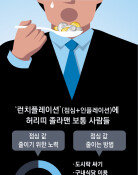The Education of the Joseon Royal Household
The Education of the Joseon Royal Household
Posted May. 20, 2005 23:19,

◇ The Education of the Joseon Royal Household/ Written by Shin Myeong-ho/ 317 pages 12,000 won/ Published by Sigongsa
Crown Prince Sadoseja was killed by his own father, King Yeongjo, who locked his son in a rice chest. This happened when Sadosejas son, who later became known as King Jeongjo, was 11 years old. It came as a huge shock to and confused young King Jeongjo. But despite his miserable childhood, he came to be known as one of the greatest kings of the late Joseon dynasty in the 18th Century who brought about a cultural renaissance.
King Seongjong re-organized the nations institutions in the early Joseon dynasty and consequently laid the foundation for his kingdom. King Seongjong, a great ruler, fathered Yeonsangun, a ruthless monarch.
What led to the difference? This book answers that question by looking at the way mothers raise their children. The book says that King Jeongjo was a good and wise king because his mother, Crown Princess Hong of Hyegyeonggung, was generous and wise, and that Yeonsangun was a cruel king because his mother, Yoon, a deposed queen, was extremely jealous and bad-tempered.
The book illustrates a variety of interesting stories regarding the royal households education. By providing examples of King Sejong, Yeonsangun, King Injong, King Gyeongjong, Crown Prince Sadoseja, King Jeongjo and other monarchs, the book examines how they were taught and the education that led to what they became.
The author is a professor of the history of the Joseon royal household at Pukyong National University in Busan. Last year, another book of his, Gungnyeo (Court Ladies), was published and gained much popularity from the public.
The author notes that the success or failure of royal education depended primarily on how much love, trust, and sincerity parents showed. The three generations of King Yeongjo, Crown Prince Sadoseja and King Jeongjo are the most relevant cases to his claim.
Seven years after his eldest son died, Crown Prince Sadoseja was born to King Yeongjo. Upon his birth, the king decided to crown the newborn. To that end, the king distanced himself from his son and let others in his court take care of him in order to raise him as a future king. Later, King Yeongjo and Crown Prince Sadoseja felt uncomfortable with each other. Sadoseja was afraid of his father all the time, and King Yeongjo scolded his shy and nervous son. Crown Prince Sadosejas fear of his father led to mental problems. Whenever King Yeongjo reproached him, Sadoseja beat or killed people to relieve his stress. That made King Yeongjo more furious and provided an excuse for the king to put his son to death. The author explains that parental indifference in his childhood brought Sadoseja to a tragic death.
On the other hand, the prosperous reign of King Jeongjo was largely thanks to the wise way his mother, Crown Princess Hong of Hyegyeonggung, educated him. When the crown princess gave birth to King Jeongjo, the feud between Sadoseja and King Yeongjo was already more than serious. Crown Princess Hong loved his son devotedly and was determined not to let her son tread his fathers footsteps.
Even when her husband, Crown Prince Sadoseja, was killed, she remained calm and wise for her son. The author stresses that King Jeongjos success was mainly because Crown Princess Hong taught her son not to hold grudges, rather being grateful for King Yeongjos favor. To the contrary, Yeonsangun is a classic example of failed prenatal care in the history of Joseons royal household, the author says. When the queen was pregnant, the king refrained from sexual intercourse, which was the etiquette of the Joseon royal house. However, King Seongjong had sexual relations with two concubines in the meantime, and the two concubines became pregnant as well. Queen Yoon became highly jealous and hateful of the concubines when she found out about their pregnancies. The queen came to have more quarrels with King Seongjong and even attempted to execute the concubines.
The author concludes that Yeonsanguns violent nature originated from his mothers fury. His mothers anger could have seriously affected the unborn Yeonsangun, the author contends. On that matter, King Seongjong could not be exempt from his share of responsibility because he failed to exercise self-control.
Other interesting upbringing stories involve the royal households emphasis on personality. For the mental good of the unborn child, beating as a punishment was banned in the court when a member of the royal household was pregnant. Queen Myeongseonghwanghu tried to give his son, King Sunjong, a frugal personality by wrapping him in old cotton cloth, not silk. Other examples are also included.
Princes started their formal study around the age of five and continued it even after their enthronement. After their accession to the throne, kings learned from and had discussions with respected scholars. The entire process of the education of and discussions with kings is called gyeongyeon, which is similar to the concept of lifelong education. According to the author, although King Yeongjo was not taught to be a crown prince, he gained greatly from the continued gyeongyeon and laid the foundation for the prosperity in the later Joseon dynasty.
Joseons royal education was such a sophisticated process that it was given in stages, including prenatal care, infancy, adolescence, and post-enthronement. The book plainly but clearly states that the most stressed virtue was, of course, parental love and wisdom.
Kwawg-Pyo Lee kplee@donga.com







